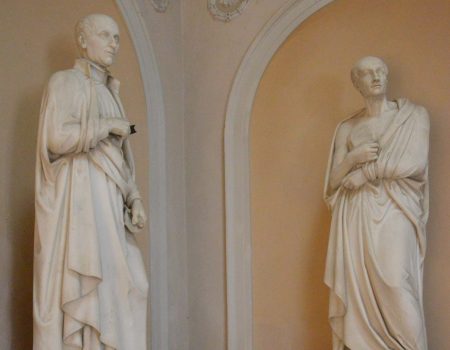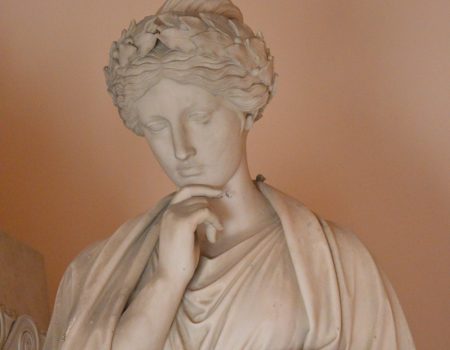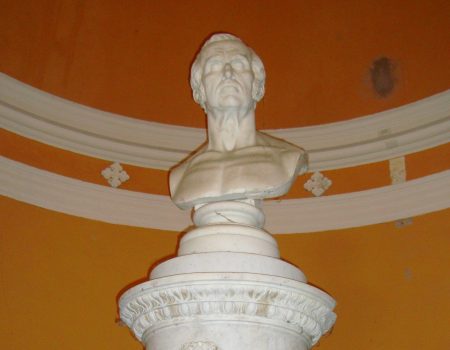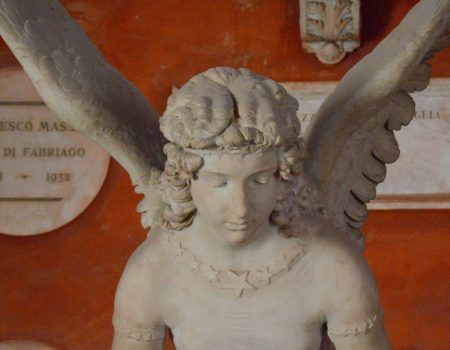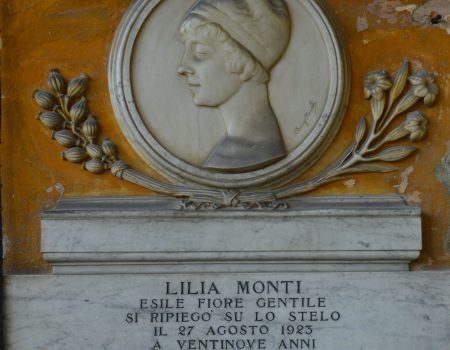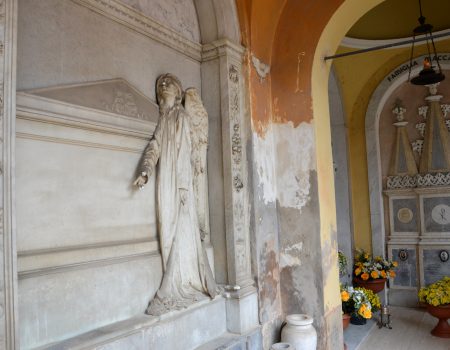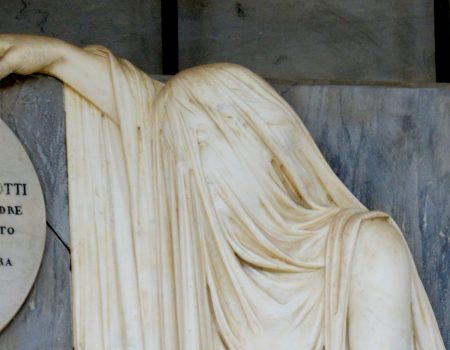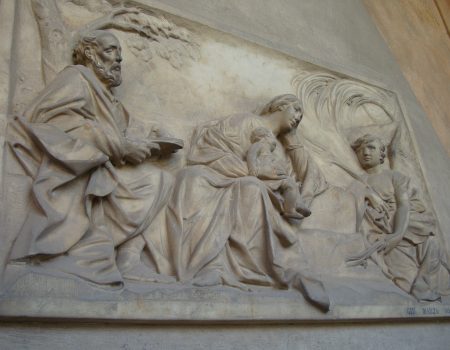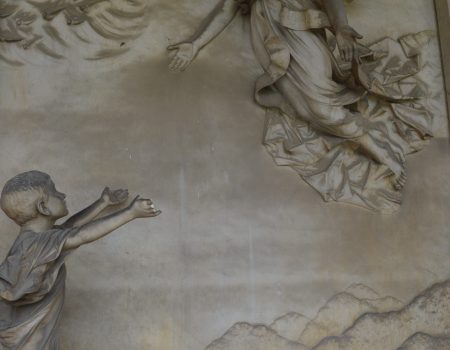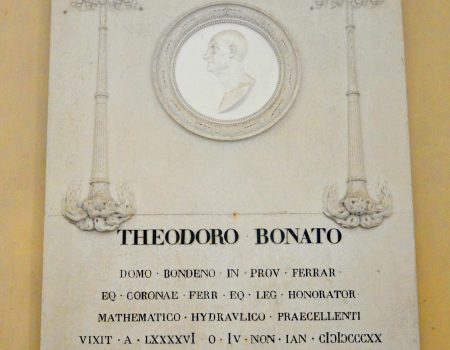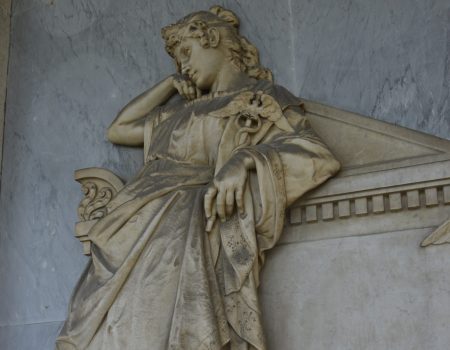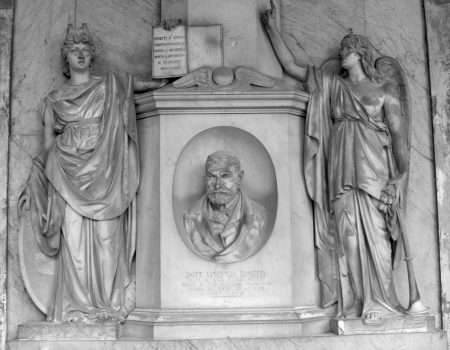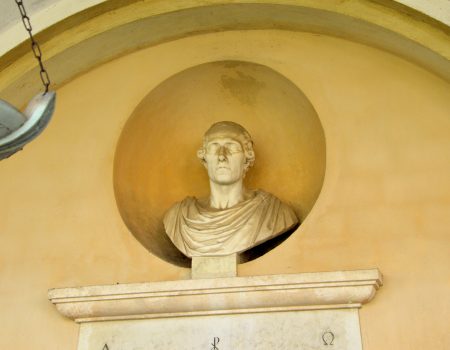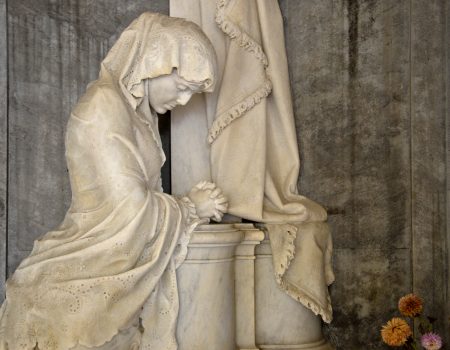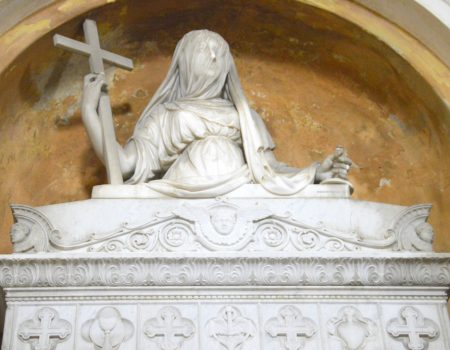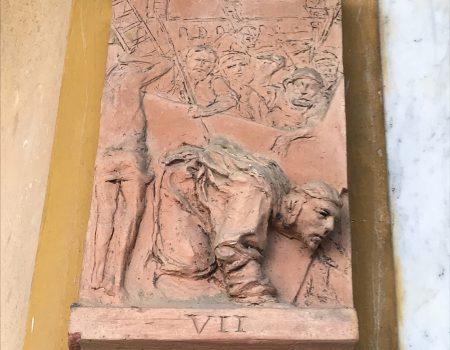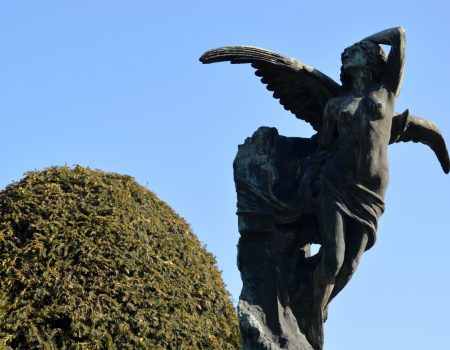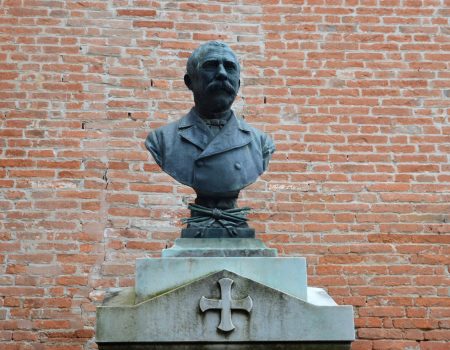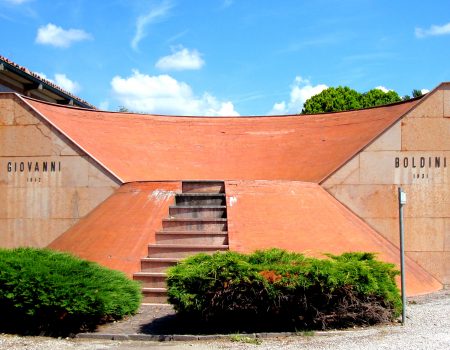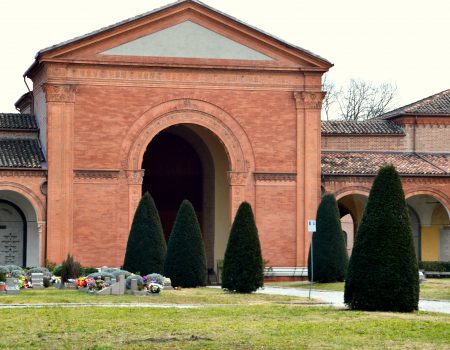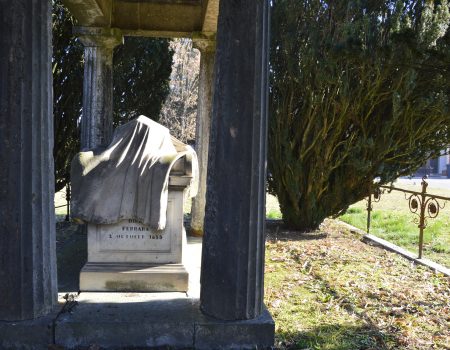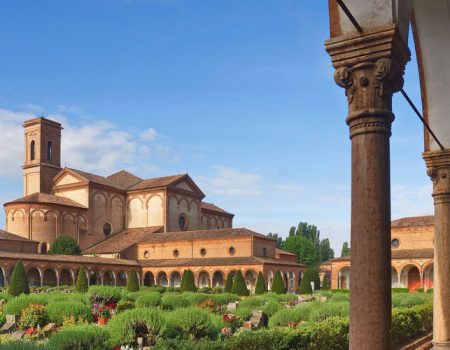The Charterhouse is, first and foremost, a place of intimate and devout recollection that emanates the eternal beauty of the past. The splendid alternations of grass and stone are brought together in the funerary art, which is found in some of its most brilliant expressions within the complex.
You’ll have the opportunity to admire magnificent busts and statues, little gems of funerary iconography, and extraordinary works of sepulchral architecture brought to life by the skilful hands of master sculptors. Antonio Canova, one of the greatest names in neoclassicism, lent his talent to sculpt the bust of Leonardo Cicognara, his biographer. But other authoritative religious sculptors have left their marks among the Charterhouse’s Cloisters as well, including Ambrogio Zuffi, Alfonso Lombardi, Luigi Legnani, and Camillo Torreggiani.
Lovers of spirituality won’t want to miss the terracotta Via Crucis in the First Grand Cloister by eclectic sculptor Ulderico Fabbri, while architecture enthusiasts will want to dedicate special attention to the two sepulchral monuments dedicated to Giovanni Boldini.
A stop at the Church of San Cristoforo, which has recently undergone considerable interior structural and restoration work, is an absolute must. The building, which was designed by Biagio Rossetti, one of the greatest names in Renaissance architecture, was subjected to these renovation efforts in order to ensure its structural soundness, and, above all, to restore the ancient beauty of its masterpieces of religious art painted by masters like Carracci, Scarsellino, Bononi and Bastianino.
